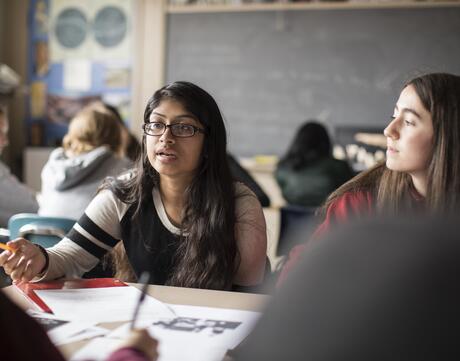
Stations: Interacting with Multiple Texts
At a Glance
Language
English — USSubject
- English & Language Arts
- History
- Social Studies
Grade
6–12Overview
Why Use Stations?
In a stations activity, small groups of students move from station to station to read, watch, and interpret a variety of resources that focus on an event, theme, or question from multiple perspectives. Groups of students spend an allotted amount of time at each station interacting with the material and either answering questions or engaging in a reflective activity. The stations activity works well to launch a new unit or to explore in more depth something students have already studied. When the teacher selects from different kinds of content—informational texts, poetry, art, photography, maps, video or audio clips—students can engage with the material using multiple modalities thus allowing them to reach a deeper understanding of the event, theme, or question than they might having read or discussed just one or two texts.
Lesson Plans
How to Use Stations in Your Classroom
Unlimited Access to Learning. More Added Every Month.
Facing History & Ourselves is designed for educators who want to help students explore identity, think critically, grow emotionally, act ethically, and participate in civic life. It’s hard work, so we’ve developed some go-to professional learning opportunities to help you along the way.
Exploring ELA Text Selection with Julia Torres
On-Demand

Working for Justice, Equity and Civic Agency in Our Schools: A Conversation with Clint Smith
On-Demand

Centering Student Voices to Build Community and Agency
On-Demand














